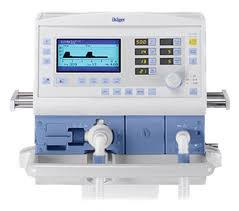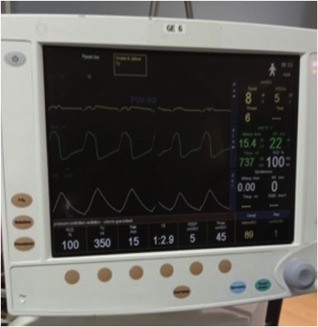Introduction
Mechanical ventilation has long been an essential component of critical care medicine, saving countless lives in intensive care units (ICUs) and surgical settings. Pressure-Regulated Volume Control (PRVC), one of the several ventilatory modes that are currently accessible, has become a sophisticated choice that blends accuracy, flexibility, and patient safety. This blog explores the complexities of PRVC, its uses, and its importance, especially in view of current developments in medicine.
What is PRVC Mode?
The advantages of both volume-controlled and pressure-controlled ventilation are combined in the dual-control ventilation mode known as Pressure-Regulated Volume Control (PRVC). It is made especially to provide a predetermined tidal volume while automatically modifying inspiratory pressure to account for variations in the patient's airway resistance and lung compliance.
In PRVC, the ventilator continually analyzes the patient's respiratory mechanics and adjusts in real time to ensure adequate ventilation with the lowest risk of pressure-related lung damage. Because of this feature, PRVC is a vital tool for treating patients who are very sick.
 |
| Image Credit |
How PRVC Works
Set Tidal Volume: Clinicians set a desired tidal volume (amount of air delivered per breath) and a maximum pressure limit.
Initial Breath: The ventilator delivers the first breath using an initial pressure estimate based on patient compliance.
Feedback Mechanism: The ventilator measures the delivered tidal volume and adjusts the pressure for subsequent breaths to achieve the target volume.
Continuous Adjustment: PRVC continuously recalibrates pressure within the set limits, providing consistent tidal volume delivery even as the patient’s lung mechanics change.
This adaptive mechanism ensures precise and safe ventilation, making PRVC an excellent choice for patients with variable lung conditions.
Why PRVC is a Game-Changer in Mechanical Ventilation
The unique ability of PRVC to combine the advantages of pressure control and volume control has redefined critical care ventilation. Below are some of the reasons why PRVC stands out:
1. Prevention of Barotrauma
One of the most significant risks in mechanical ventilation is barotrauma, caused by excessive airway pressures. PRVC minimizes this risk by dynamically adjusting inspiratory pressures to the lowest level required to achieve the set tidal volume.
2. Enhanced Patient-Ventilator Synchrony
Patient-ventilator dyssynchrony can lead to discomfort and prolonged ventilation. PRVC’s real-time adjustments promote better synchrony with the patient’s spontaneous breathing efforts, improving comfort and outcomes.
3. Optimized Oxygenation and Ventilation
PRVC ensures consistent delivery of tidal volume, which is crucial for maintaining adequate gas exchange in conditions like ARDS (Acute Respiratory Distress Syndrome).
4. Reduced Work of Breathing
For patients in respiratory distress, PRVC reduces the work required to breathe, allowing their lungs to rest and heal more effectively.
Clinical Applications of PRVC
PRVC has proven invaluable across a range of clinical scenarios, including:
1. Management of ARDS
In ARDS, where lung compliance is severely compromised, PRVC provides precise ventilation by adjusting to rapidly changing pulmonary conditions, reducing the risk of ventilator-induced lung injury (VILI).
2. Pediatric and Neonatal Care
The delicate lungs of infants and children benefit from PRVC’s gentle approach, which ensures adequate ventilation without causing trauma.
3. Surgical Settings
During lengthy surgeries, lung compliance can fluctuate due to anesthesia and positioning. PRVC’s adaptive nature ensures consistent tidal volume delivery, enhancing intraoperative safety.
4. COVID-19 and Beyond
The COVID-19 pandemic placed unprecedented demands on mechanical ventilators. PRVC gained prominence for managing patients with COVID-19-induced ARDS, offering controlled ventilation while minimizing complications.
Considerations and Challenges
While PRVC offers numerous advantages, it is not without limitations. Clinicians must be aware of the following:
Risk of Auto-PEEP: Patients with obstructive lung diseases may experience air trapping, leading to auto-positive end-expiratory pressure (auto-PEEP).
Latency in Adjustments: Rapid changes in lung compliance may momentarily outpace the ventilator’s ability to adapt, potentially leading to under- or over-ventilation.
Need for Expertise: PRVC requires careful monitoring and adjustments by trained clinicians to ensure optimal performance and patient safety.
A Vision for the Future
PRVC and other ventilatory modes will likely grow even more advanced as technology develops. The design of ventilators is already incorporating advances in machine learning and artificial intelligence, which promise improved accuracy and patient-specific treatment. These developments are based on PRVC, which demonstrates the possibilities of intelligent, adaptive ventilation.
Why Understanding PRVC Matters
Healthcare professionals can enhance patient outcomes and optimize resource use by having a thorough understanding of PRVC. Understanding ventilatory alternatives can help patients and their families communicate with care providers more effectively, enabling them to make well-informed decisions at crucial times.
Conclusion
PRVC is a ground-breaking method that strikes a compromise between safety, flexibility, and accuracy in a world where mechanical ventilation frequently serves as the lifeline for critically ill patients. By seamlessly merging the strengths of pressure and volume management, PRVC not only addresses the complicated needs of critical care, but also paves the way for future advances in intelligent ventilatory support. Its contribution to improving patient care emphasizes how crucial ongoing innovation in medical technology.


.jpeg)

No comments:
Post a Comment